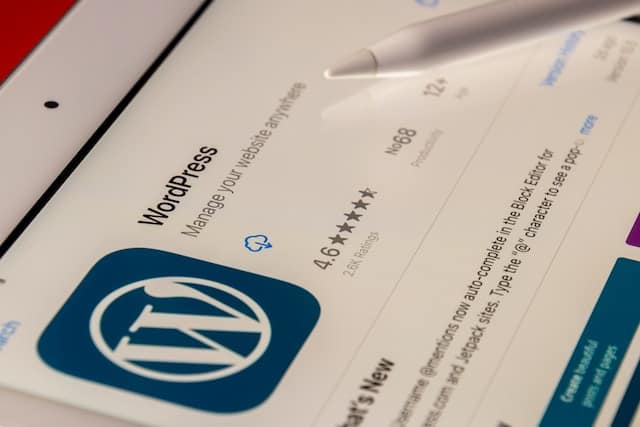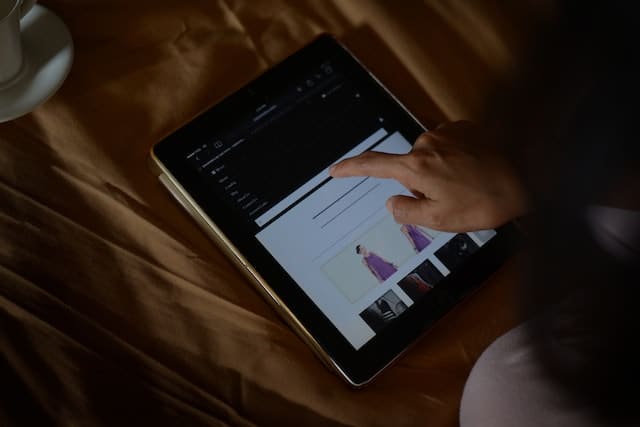A web development portfolio is a collection of work samples. A portfolio showcases a web developer’s skills, expertise, and experience. It is a valuable tool for demonstrating their abilities to potential clients or employers. It establishes credibility in the field of web development.
A web development portfolio typically includes websites or web applications. Developers build it to show information about their qualifications, certifications, and achievements. Web developers can stand out in a crowded job market and win more clients or job offers through this.
Creating a web development portfolio requires careful planning, developing, and content creation. That makes it effective and compelling.
Here, you will find out how to build a portfolio. You will also know why it is important for web developers. We’ll walk you through the entire procedure.
Why Build a Web Developer Portfolio

Build strong portfolio for Web Developers.
As a web developer, building a web developer portfolio is crucial to show your expertise. The competition in the job market is rising.
Having a comprehensive portfolio can help you stand out from the crowd. It will also help to land your dream job. Here are some reasons why building web designers portfolio is essential:
Web developer portfolios serve as a tangible representation of your work. It provides a platform to show the websites and web applications you have developed. It demonstrates your technical skills and the quality of your work.
Potential employers or clients can browse through your portfolio to check your skill set. They will determine if your work aligns with their needs.
Including web developer collection examples of your past projects on your own portfolio website allows you to demonstrate your ability to develop websites.
Developing websites is a collaborative process. It shows your contribution to the projects you have worked on. This can help clients or employers test your ability to work with others.
You can show your collaboration skills by including information about your role in each project. You will also be able to show your communication abilities and problem solving approach.
Having your own portfolio website helps to establish your personal brand and professional identity. It allows you to show your unique style, approach, and expertise.
It will differentiate you from other web developers in the market. A well crafted portfolio website can help build your reputation. It can attract more clients and job opportunities.
How to Build Your Online Portfolio Site
You need to follow some steps when building a web developer portfolio. All of that will be talked about below.
Planning Your Portfolio
Planning your portfolio is a crucial step. It helps you to create a web developer portfolio. It shows your expertise and attracts clients or employers. Here are some essential steps to consider when planning your web developer portfolio:
Identifying your target audience
Knowing your target audience is crucial when planning your web developer portfolio. Consider whom you want to show your work to clients, employers, or other developers.
Understanding your audience’s needs and preferences can help you tailor your portfolio to meet their requirements.
Defining your niche
Defining your niche is another essential aspect of planning your web developer portfolio. Consider the type of web dev project you want to show.
Identify the skills and expertise that you want to highlight. Finding and exploiting your specialty can help you succeed in a competitive industry. You can attract clients or employers who are looking for specific skills or expertise.
Choosing a portfolio platform

web designer’s portfolio.
Choosing the right platform for your web developer portfolio website is crucial. Consider your budget, design preferences, and functionality requirements when choosing a platform. Popular options include WordPress, Squarespace, and Wix.
Gathering content for your portfolio
Gathering content for your web dev portfolio is another essential step. Collect examples of your best work.
That should include website designs, web development projects, and code snippets. Add screenshots, videos, or demos of your projects to show your skills and expertise.
Setting goals for your portfolio
Setting goals for your web developer portfolio can help you stay focused and motivated. Consider what you want to achieve with your portfolio.
Designing Your Portfolio
Designing your web developer portfolio is an important step. Creating a visually appealing personal website that shows your web development projects is essential. That can attract clients or employers. Here are some essential aspects to consider when designing your web developer portfolio:
Choosing a design style that suits your niche and target audience
Choosing a design style that is consistent with your niche and target audience is crucial when designing your web dev collection. Consider the type of web development plan you want to show.
Also, select the audience you want to attract. Choose a design style that reflects your skills and expertise. That ought to hit home with your intended listeners.
Creating a consistent layout and color scheme
Creating a consistent layout and color scheme is another essential aspect. This step is important for designing your web development portfolio.
Use a consistent font, color scheme, and layout to create a visually appealing collection. A consistent design can help create a professional image. It can enhance the user experience.
Organizing your content in a clear and user friendly way
Organizing your content in a clear and user friendly way is crucial. Use clear headings and subheadings to guide users through your collection. Use a simple navigation menu. It will facilitate easy access to relevant data for consumers.
Choosing the right images and graphics to enhance your content
Choosing the right images and graphics can help enhance the visual appeal of your web dev collections. Use high quality images. That should be relevant to your web development project and personal plans. Use graphics to enhance the user experience.
Creating Content for Your Portfolio
Creating content for your web developer portfolio is an important step. It will help to get the attention of your client or employers. When developing material for your online resume, keep the following in mind:
Writing effective project descriptions
Writing effective project descriptions is essential when creating content for your portfolio. Use clear and concise language to describe your collection projects. Highlight the skills and technologies you used. Use bullet points to list the features and benefits of your collection projects.
Showcasing your skills and expertise
It is another important aspect of creating content for your web development portfolio. Provide examples of successful portfolio plans. Highlight your skills and expertise. Use screenshots and videos to show your skills and expertise.
Providing details about the technologies and tools you use

Providing details about the programming languages, and tools you use. It can help establish your expertise. It can attract clients and employers.
Use bullet points to list the technologies and tools you’re proficient in. Provide details about how you use them in your portfolio plans.
Adding testimonials and reviews from clients
Adding testimonials and reviews from clients can help build credibility and trust. Ask your clients for testimonials and reviews. Add them to your web developer portfolios.
Use quotes from clients to show your expertise. Also, highlight the benefits of working with you.
Adding Projects to Your Portfolio
It’s important to add projects to your web development portfolio. You have to choose the right projects that show your expertise as a front end developer. Here are some essential aspects to consider when adding projects to your portfolio:
Choosing the right projects to showcase
Choose projects that show your skills and experience in front end development. The projects you choose should be relevant to your niche and target audience. Also, consider projects that you’re proud of and that you feel best to represent your skills.
Highlighting your best work
Highlighting your best work is essential when adding projects to your web dev portfolio. Choose projects that you’re most proud of and that show your skills and expertise.
Show your best work first. It will be the first impression potential employers will have of your portfolio’s design.
Creating case studies that showcase your process and approach
Creating case studies is a great way to show your process. Describe your approach to each project.
Highlight the challenges you faced, and describe how you overcame them. Potential managers will appreciate this insight into your thought process. This will also help to approach your expertise in front end development.
Providing details about your role in each project
Providing details about your role in each project is important. Describe your responsibilities and the contributions you made to the project. This will help potential employers understand your role and contributions to the project.
Keep your portfolio site up to date
Keeping your portfolio site up to date is crucial. Your collection should reflect your latest work. Always be adding new tasks.
Additionally, remove older projects that no longer reflect your current skillset. This will ensure that potential employers see your latest and best work. That will increase your chances of being hired for new projects.
Promoting Your Portfolio
Once you have built an impressive web development collection, the next step is to promote it effectively. As a result, you can attract potential employers. Here are some key strategies for promoting your collection:
Exposing your work to the world via various channels
Social media is a powerful tool for promoting your web dev collection. Share links to your collection on platforms. For example, LinkedIn, Twitter, and Facebook. It will help you to reach clients.
You can also use platforms like GitHub, Dribbble, and Behance. You can showcase your portfolio plans and connect with a web designer and developer.
Optimizing your portfolio for search engines
Search engine optimization (SEO) is crucial. It ensures your collection site ranks high in search engine results pages (SERPs). To optimize your portfolio for search engines, include relevant keywords in your content and metadata.
Use header tags to structure your content. Make sure your website is accessible and fast to display on mobile devices.
Building your personal brand through your portfolio
Your web developers portfolio is an excellent opportunity to build your personal brand. You can build a reputation as a go to authority in your industry. Make sure your collection shows your unique style. Use your collection to tell your story and share your passions, interests, and career goals.
Networking with potential clients and employers
Networking is crucial for expanding your web development career and promoting your collection. Attend industry events, join online forums and groups, and connect with clients.
Make sure to mention your collection in your networking activities. Share it with anyone who expresses interest in your work.
Collaborating with other web developers

Collaboration can be a powerful way to promote your collection and expand your network. Partner with other web devs to work on projects together. You can share ideas, and promote each other’s work.
You can collaborate with other web devs in your area. Connect with them online through social media, and other platforms. You can show your skills in new and exciting ways by working with others. You can build relationships that can lead to new opportunities in the future.
Maintaining Your web development Portfolio
Maintaining your web developer portfolio website is just as important as creating it. A well managed collection website can help you stay relevant. Here are some tips for keeping your portfolio up to date:
Updating your portfolio regularly with new projects and content
It’s important to show your latest work on your portfolio to demonstrate your growth and development as a web developer. Regularly update your collection with new web development projects and case studies. It will show off your skills and expertise.
Responding to feedback from clients and employers
Listen to feedback from clients and employers and use it to improve your collection. If they suggest changes or improvements, take their tips seriously. Consider making changes to your collection to better show your skills and experience.
Monitoring your portfolio’s performance and analytics
Use tools like Google Analytics to monitor your portfolio’s performance. You can see which pages and projects are getting the most attention. Use this data to make informed decisions about how to optimize your collection for maximum impact.
Continuously improving your portfolio to stay ahead of the competition
Look at other web devs’ portfolio examples online to see what’s working and what’s not. Use this information to make improvements to your collection. As a result, you can stay ahead of the competition.
Experiment with new design styles, layout options, and content formats. It will keep your collection fresh and engaging.
Backing up your portfolio
It’s important to have backups of your collection in case anything happens to your website. Backing up your collection regularly ensures that you won’t lose your hard work and projects.
You can use backup plugins or services to regularly save copies of your online collection. This way, you can easily restore your collection if anything goes wrong, such as a website crash or data loss.
How Can I make a web development portfolio without experience?

Inexperience portfolio for a Web Developer.
If you’re a web dev with no experience, you can still create a collection. Here are some tips to help you make web developers portfolio with no experience:
Start by creating some personal projects: If you don’t have any professional experience, you can still create personal plans to showcase your skills. Choose a simple web development project that interests you. Develop it from start to finish.
Use online resources to learn new skills: There are plenty of online resources available that can help you learn new skills. Take advantage of these resources. Also, learn new web development skills that you can show in your collection.
Choose a minimalist design: When designing your portfolio, choose a minimalist design that puts the focus on your work. A clean, simple design can make your work stand out and show employers that you have a good eye for design.
Focus on your skills and potential: Instead of highlighting your lack of experience, focus on your skills and potential. Explain your thought process behind your projects. Talk about what you learned during the process.
Use your personal website: If you don’t have a lot of experience, you can still create a personal website to showcase your work. Use your personal website to highlight your skills and potential. Also, include links to your personal projects.
Conclusion
Having a strong web development portfolio is crucial for any aspiring or experienced web developer. It not only shows your skills and expertise but also helps you stand out in a competitive job market.
A good web developer portfolio should be well planned, designed, and managed. It will help to show your best work, skills, and achievements. The design should also reflect your personal brand and niche. It can attract clients and employers.
Creating an effective web dev collection requires time, effort, and attention to detail. However, it can pay off in the long run by helping you secure job opportunities. It helps to build your personal brand and improve your skills as a web developer.
We discussed some tips and ideas in this guide. Following this, you can create a compelling web developer portfolio that stands out from the rest.
Having a professional and visually appealing web dev portfolio can make all the difference. It can provide clients and employers with a clear understanding of your skills, and experience. With the right collection in hand, you can take your career to the next level and achieve your goals as a successful web designer.
